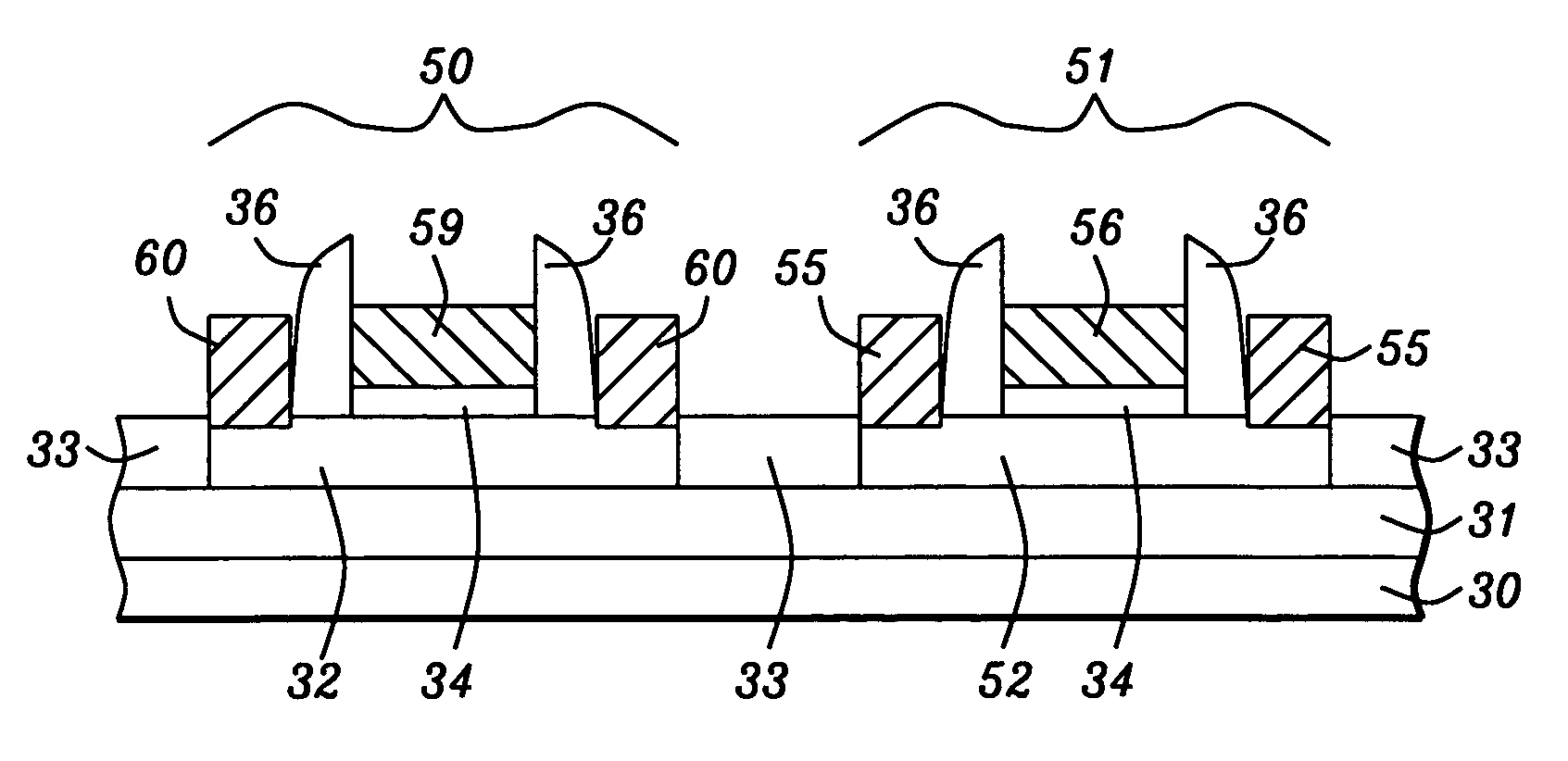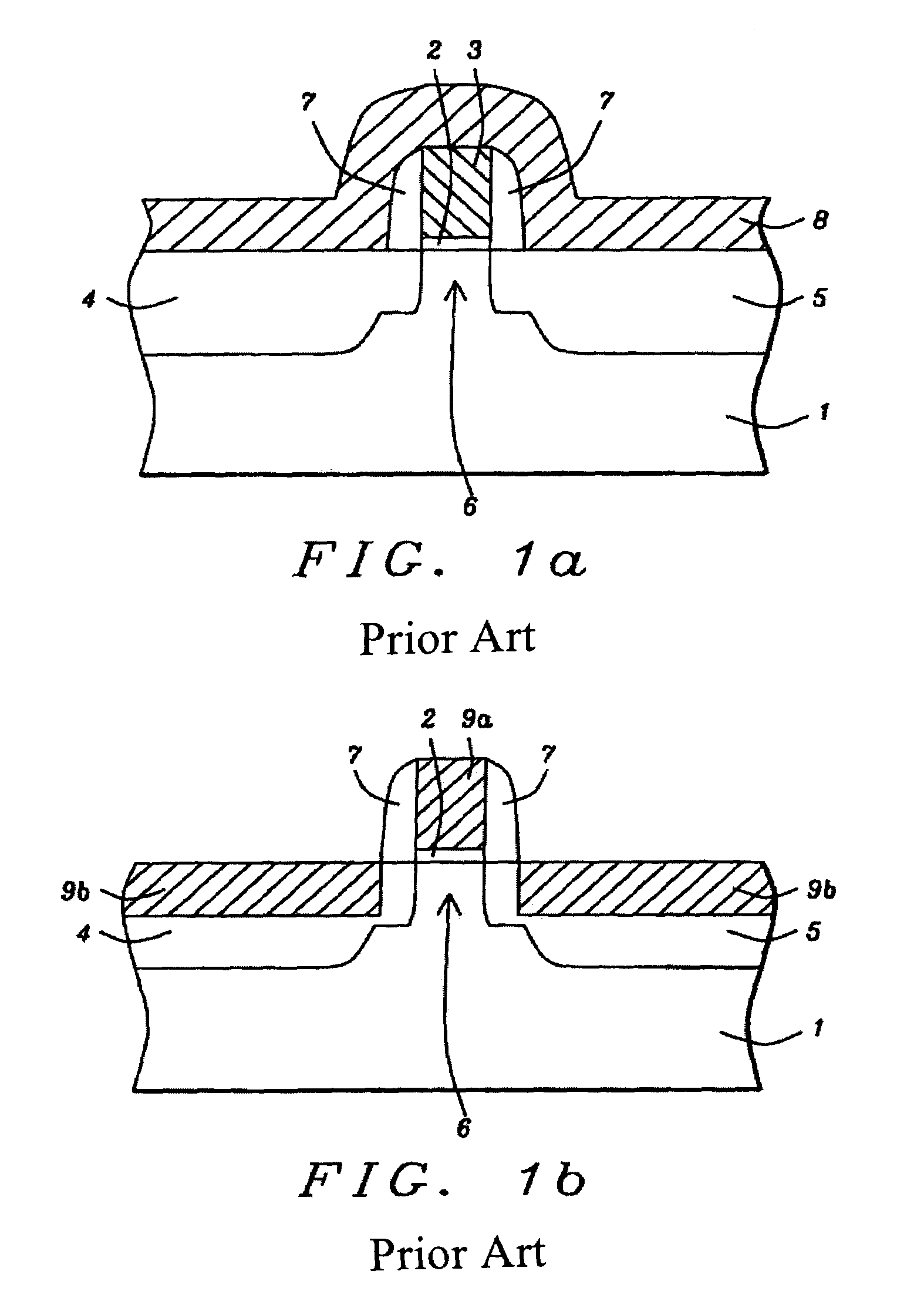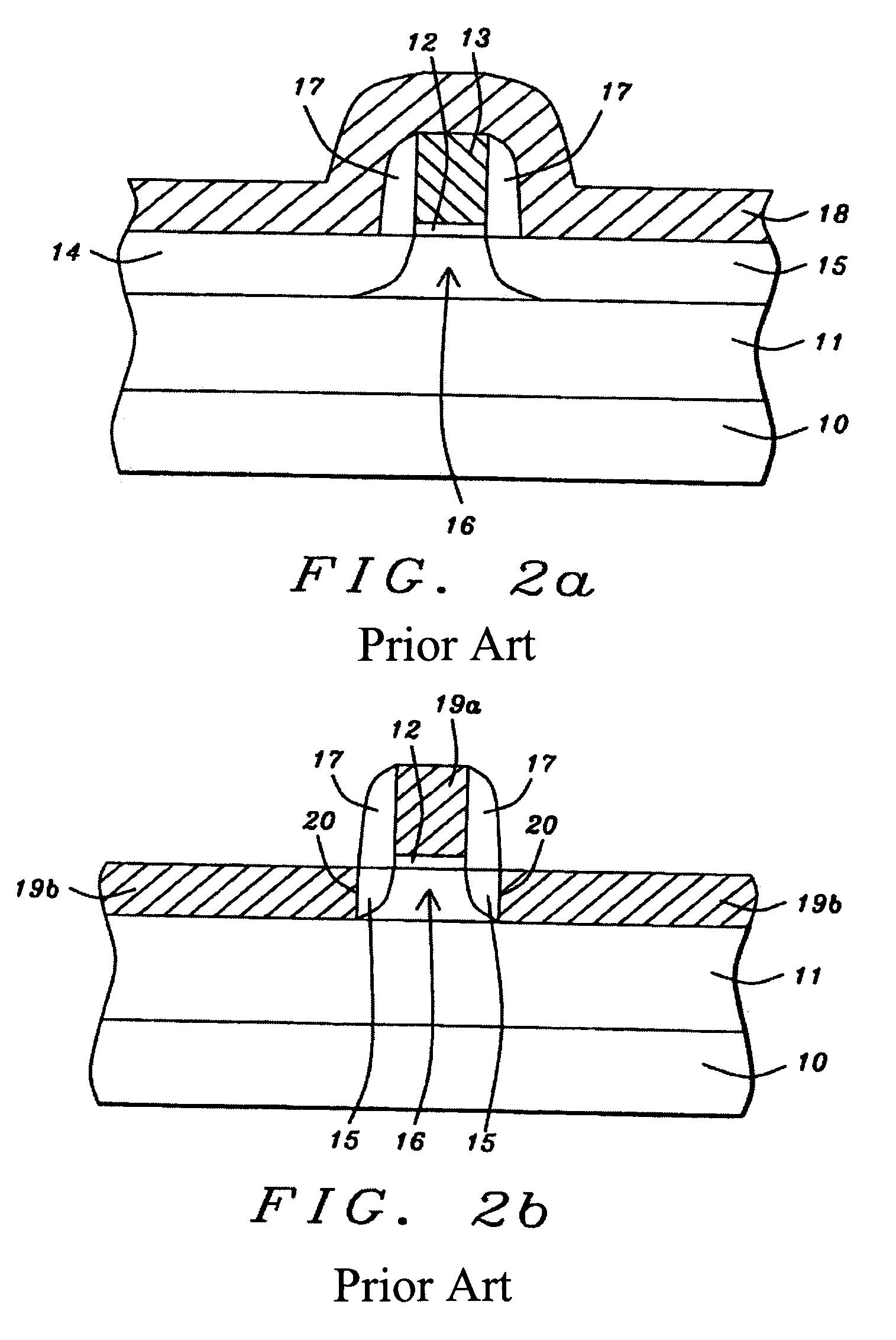Silicide gate transistors and method of manufacture
a semiconductor gate transistor and gate tunneling technology, applied in the field of semiconductor devices, can solve the problems of reduced gate length, high gate resistance, high gate tunneling leakage current, etc., and achieve the effect of improving the performance of the semiconductor devi
- Summary
- Abstract
- Description
- Claims
- Application Information
AI Technical Summary
Benefits of technology
Problems solved by technology
Method used
Image
Examples
first embodiment
[0031]The present invention generally relates to semiconductor devices with gate electrodes, also referred to as gates, that are fully silicided. More particularly, the invention relates to a transistor having the technology elements of an SOI substrate, a fully silicided gate, and silicided, raised source / drain regions. However, the invention is also useful in forming a transistor that is derived from a bulk semiconductor substrate. In the preferred first embodiment set forth in FIGS. 3a–3e, the silicidation of the gate electrode is decoupled from the silicidation of the raised source / drain regions.
[0032]Referring to FIG. 3a, there is shown a silicon-on-insulator (SOI) substrate that includes a substructure 30, a buried insulator layer 31, and a first semiconductor layer 32. Substructure 30 may contain other active and passive devices that are not shown in order to simplify the drawing. A substrate may be referred to as a chip when the substrate is comprised of more than one device...
second embodiment
[0049]the present invention is a method of fabricating a transistor with a fully silicided, recessed gate electrode in combination with raised source / drain regions that are fully silicided. The method begins with the previously described partially formed transistor shown in FIG. 3a and is continued in FIGS. 4a–4d.
[0050]Referring to FIG. 4a, a second semiconductor layer 44 is preferably selectively deposited by a CVD process on the partially formed transistor structure depicted in FIG. 3a to a thickness that is higher than the spacers 36 and gate electrode 35. The second semiconductor layer 44 is preferably polysilicon but may be amorphous silicon, an alloy such as SiGe, or a compound such as SiGeC. Furthermore, the second semiconductor layer 44 may have a non-planar surface in which the layer is thicker over gate electrode 35 than over the isolation regions 33. A CMP step known to those skilled in the art may be performed to planarize the second semiconductor layer 44 so that the l...
PUM
 Login to View More
Login to View More Abstract
Description
Claims
Application Information
 Login to View More
Login to View More - R&D
- Intellectual Property
- Life Sciences
- Materials
- Tech Scout
- Unparalleled Data Quality
- Higher Quality Content
- 60% Fewer Hallucinations
Browse by: Latest US Patents, China's latest patents, Technical Efficacy Thesaurus, Application Domain, Technology Topic, Popular Technical Reports.
© 2025 PatSnap. All rights reserved.Legal|Privacy policy|Modern Slavery Act Transparency Statement|Sitemap|About US| Contact US: help@patsnap.com



